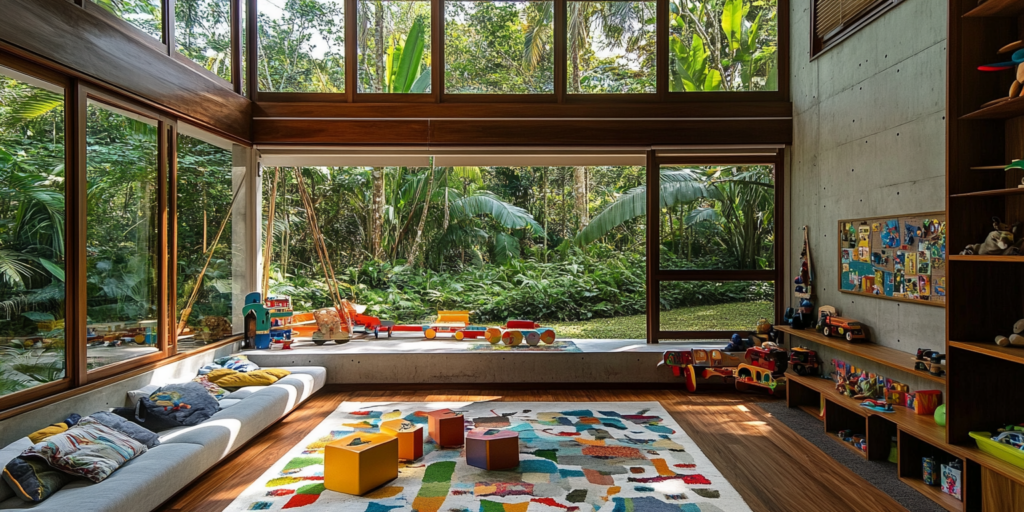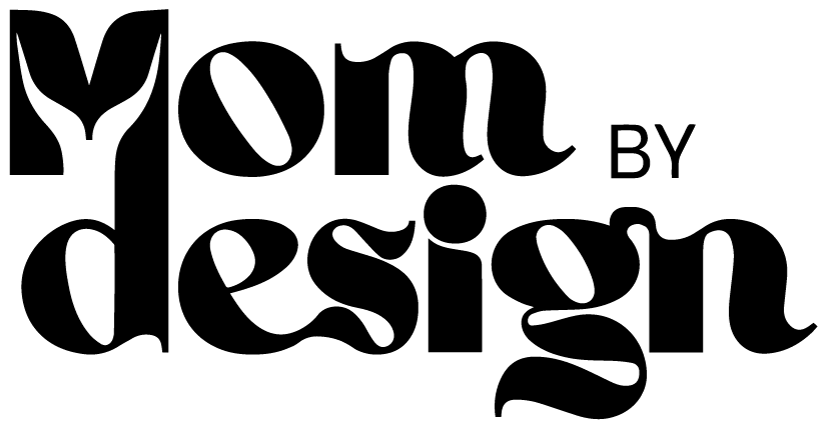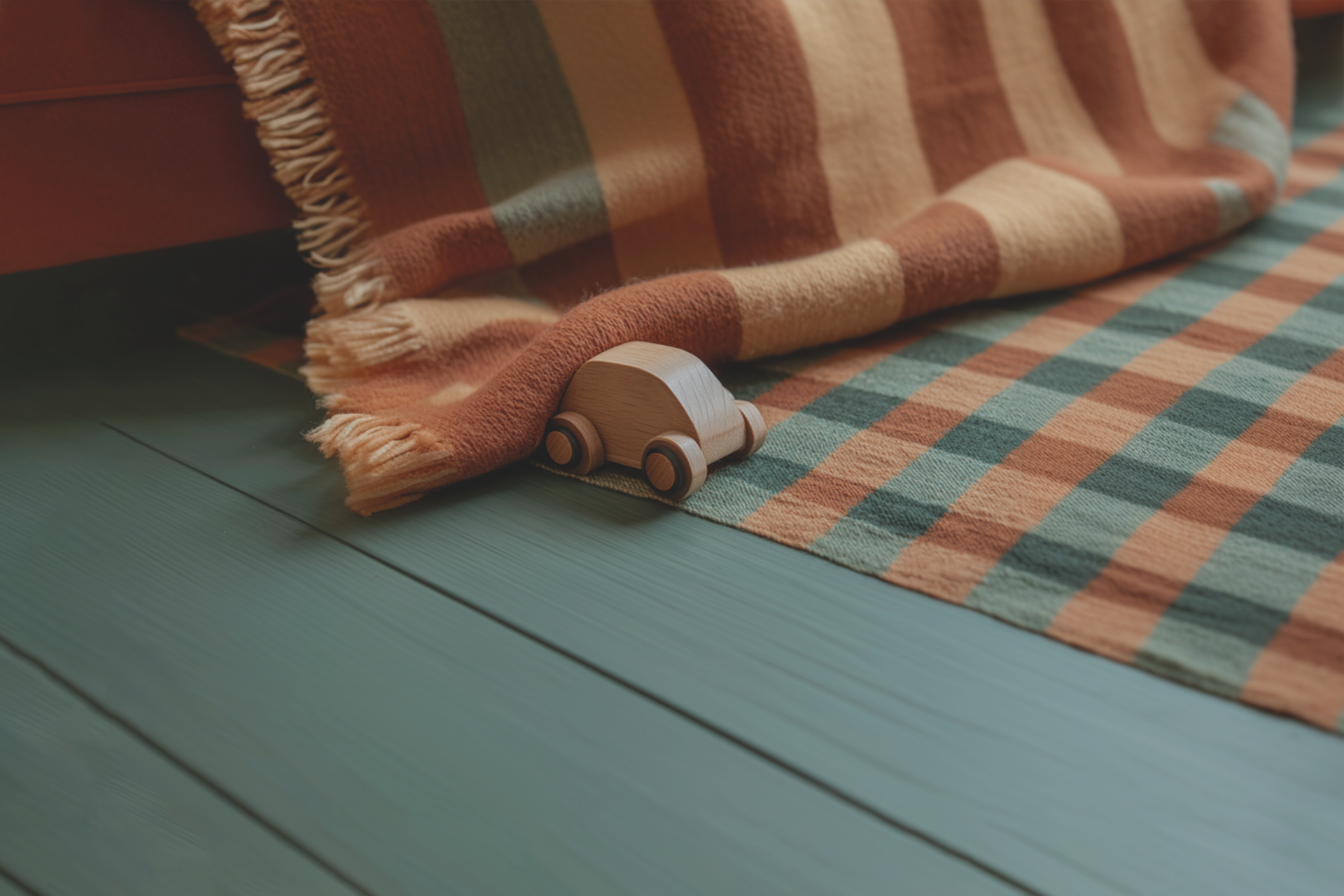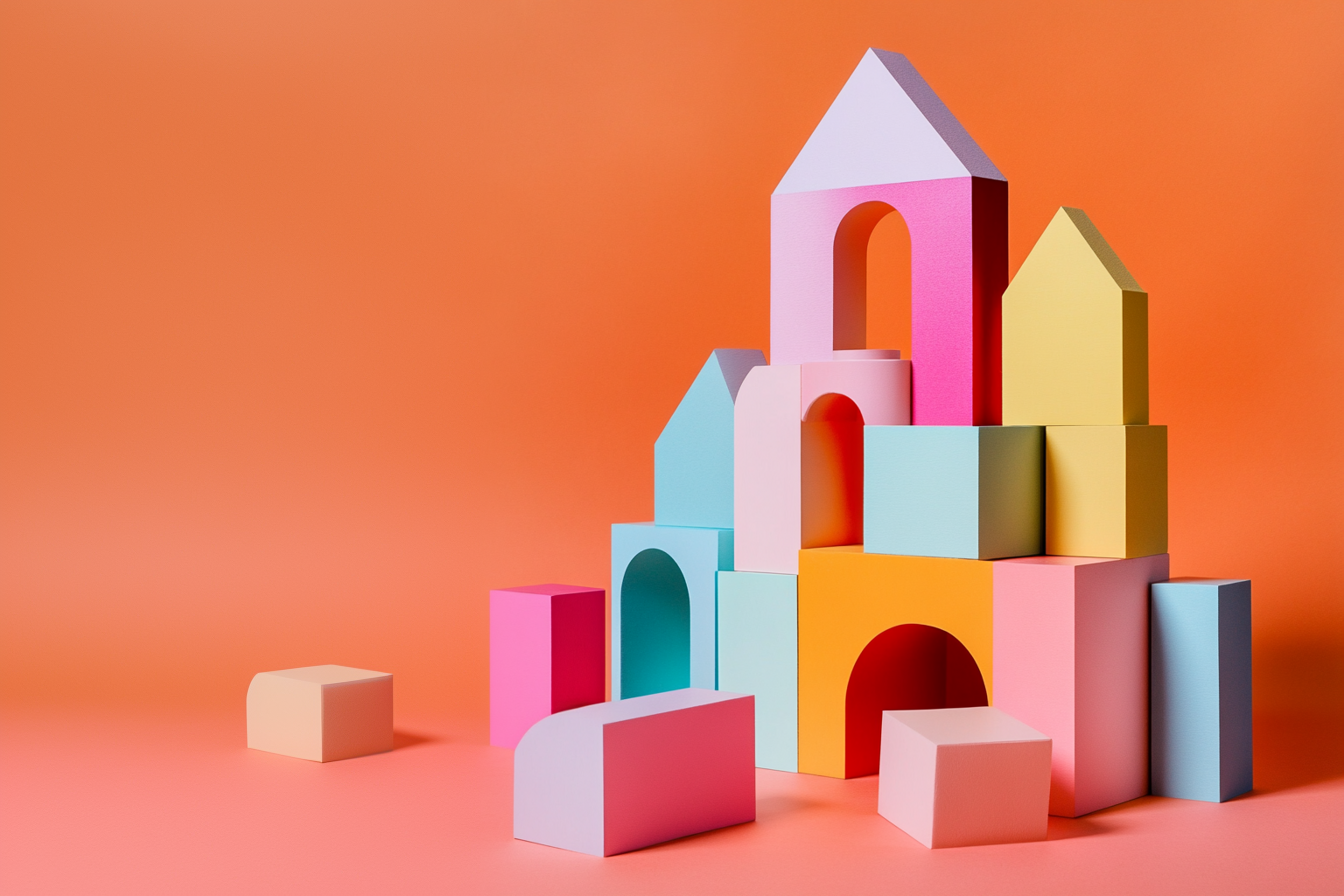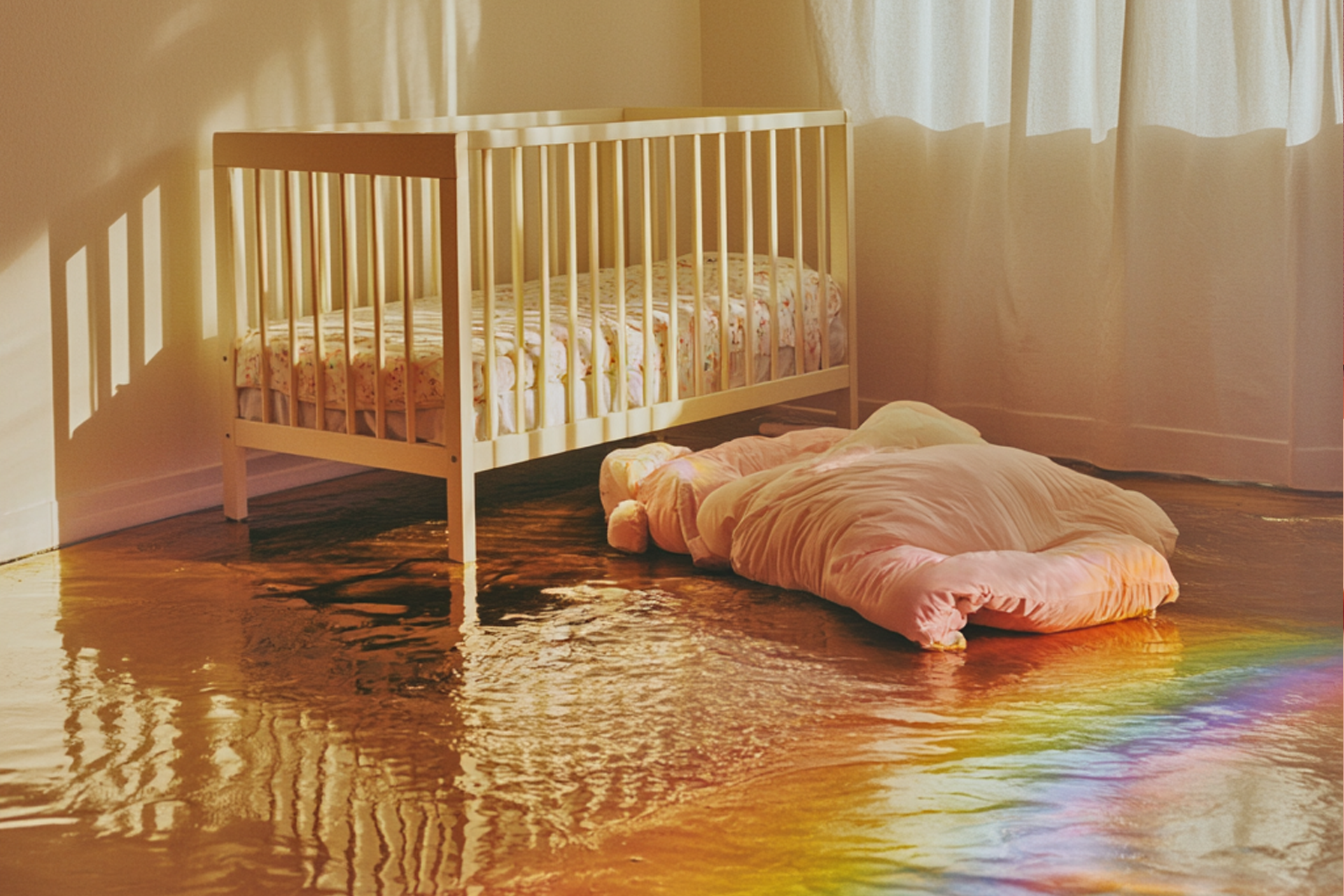
Sad beige vs. Colorful children space design
With the rapid growth of platforms like Instagram, TikTok, and YouTube, people’s lives have become increasingly curated. This includes mom influencers and their so-called aesthetics that encapsulate their fashion, homes, and even children. There’s a lot of backlash against the “sad beige aesthetic,” and under most posts within this trend, you will see outraged comments saying, “…but children need color in their life!”. There’s even a popular TikTok/Instagram account mocking the trend called Official Sad Beige.
The “sad beige” moms are being shamed and deemed selfish, vapid, and even opportunistic. It’s widely claimed that these moms follow the trend because the beige everything background is better to showcase the product she’s promoting. But not all of them are selling something. Safe to say, the opinions are not very positive, as if there weren’t enough mom-shaming out there already.
What I’m about to say, as a mother of a toddler, an interior designer, and a resident of a small apartment in the New York area – will not be a new idea but an important one: everything is good in moderation. Interior design and children’s fashion are no exception. And I will make my case to defend the “beige aesthetic” a bit.
Color can be overstimulating
Neutral colors are better for learning environments, relaxation, and focus. Studies have shown that 85% of neurodiverse children see colors more intensely. This means that bright colors can be overwhelming and lead to sensory overload.
Neurodivergence or not, distractions and sensory overload can be detrimental not only to children’s well-being and learning but to the mom as well.
Children can be loud and demanding, and between personal struggles and societal demands, creating a soothing oasis at her home might be essential. I remember one of my student bedrooms was bright green, and I swear I always felt sick there. I certainly looked unhealthy inside of it.
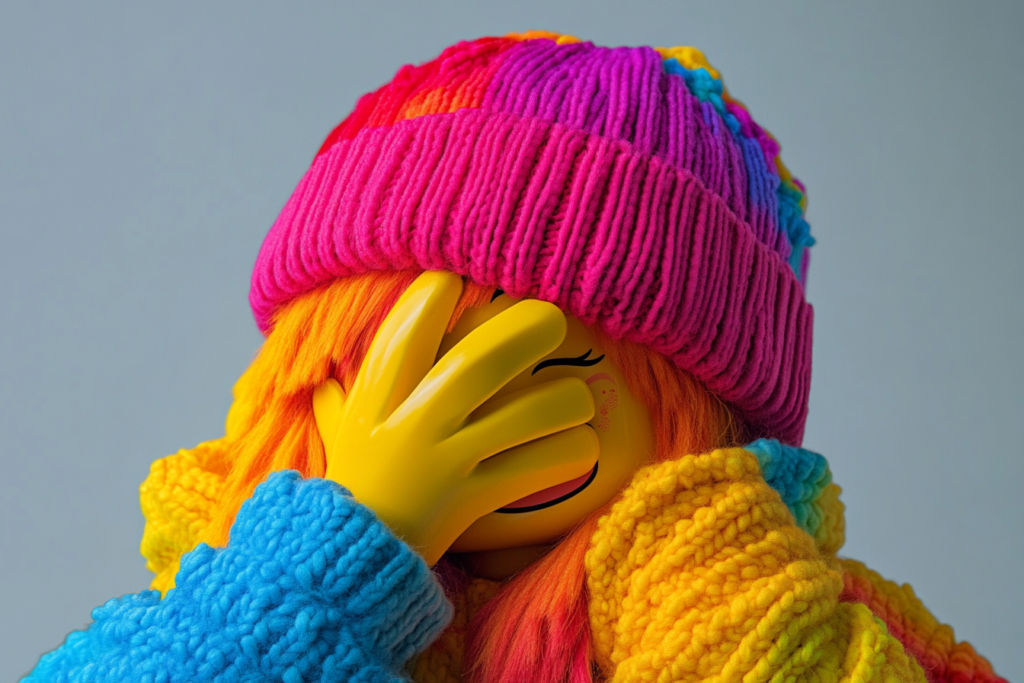
use color intentionally
Every color has meaning. The basis of color psychology is that it can affect our moods, perceptions, and even our actions. For example, red can make us hungrier but also make us angry. Introverted individuals are more attracted to cool colors, while extroverts prefer warmer colors. Bright colors can make us feel overwhelmed. This knowledge is widely used in marketing and branding (look at the visual identities of McDonald’s, Wendy’s, Grubhub, Coca-Cola, and KFC..all red to make us want their food! The list is endless).
Our needs and moods change throughout the day. In the morning, we may crave stimulation, and bold colors might give us energy. Those same shades might make us anxious and unable to relax when we try to wind down at the end of the day. If our household consists of more than one person, everyone might react differently to the same design choices. It’s worth considering each family member’s personality when we want to create the space that will bring joy to our lives.
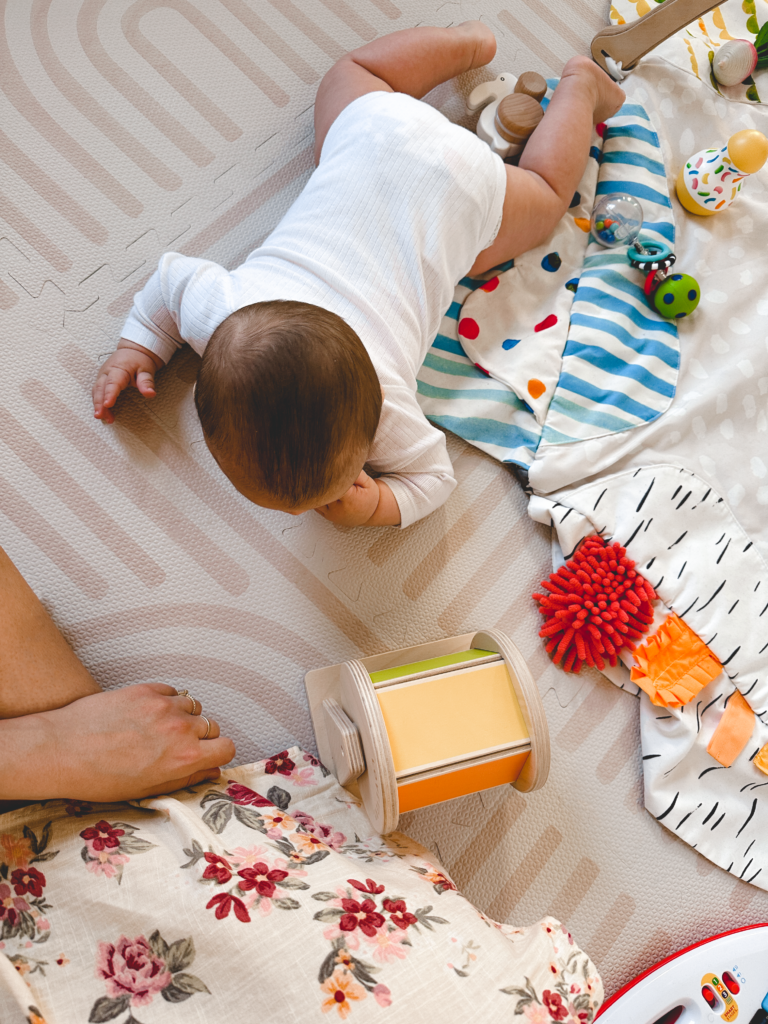
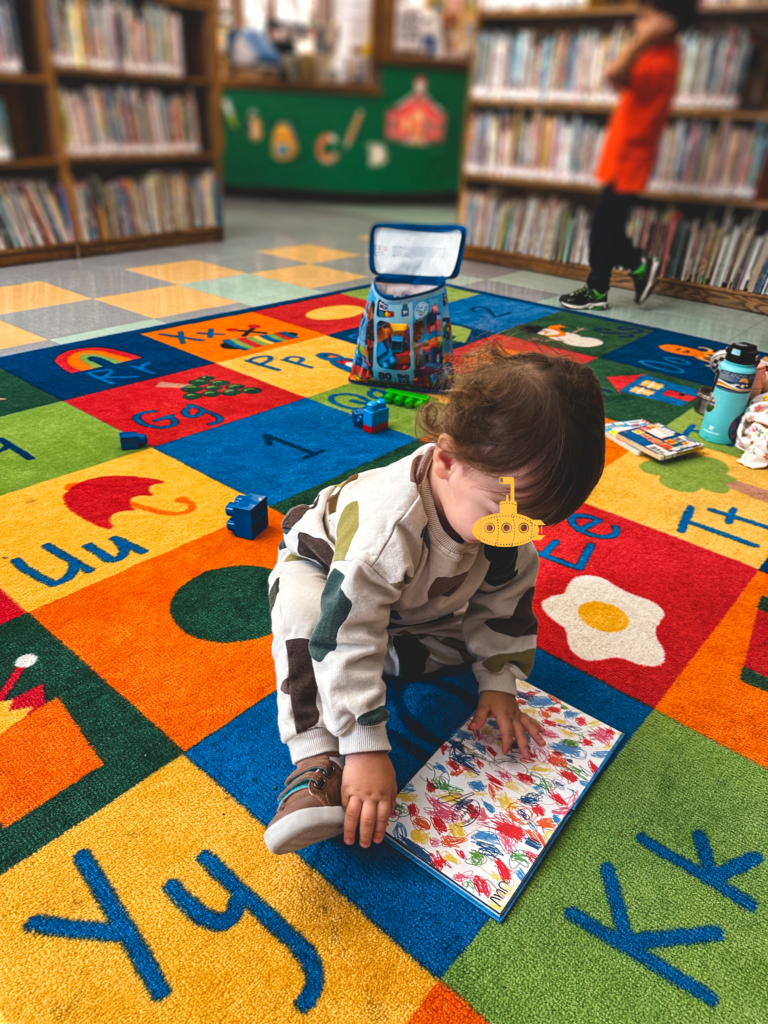
For example, when I was looking for a play mat for my son’s play area, I wanted it to be a neutral, soothing color (sure, call it sad beige) and a fun yet calming pattern. And for it to blend in with my living room design as well. He has many colorful toys, stuffies, and books. This is where we color with crayons, read, and learn. A busy play mat would detract from that.
A neutral environment brings focus to what is important
We draw with crayons on white paper, and we read books printed on white as well. Colorful learning toys attract more attention when carefully displayed on a white shelf or a play mat with a subtle design. This is one of the many reasons Montessori’s learning philosophy promotes natural materials and colors. This calming environment becomes increasingly important as kids nowadays get more screen time and are having attention issues.
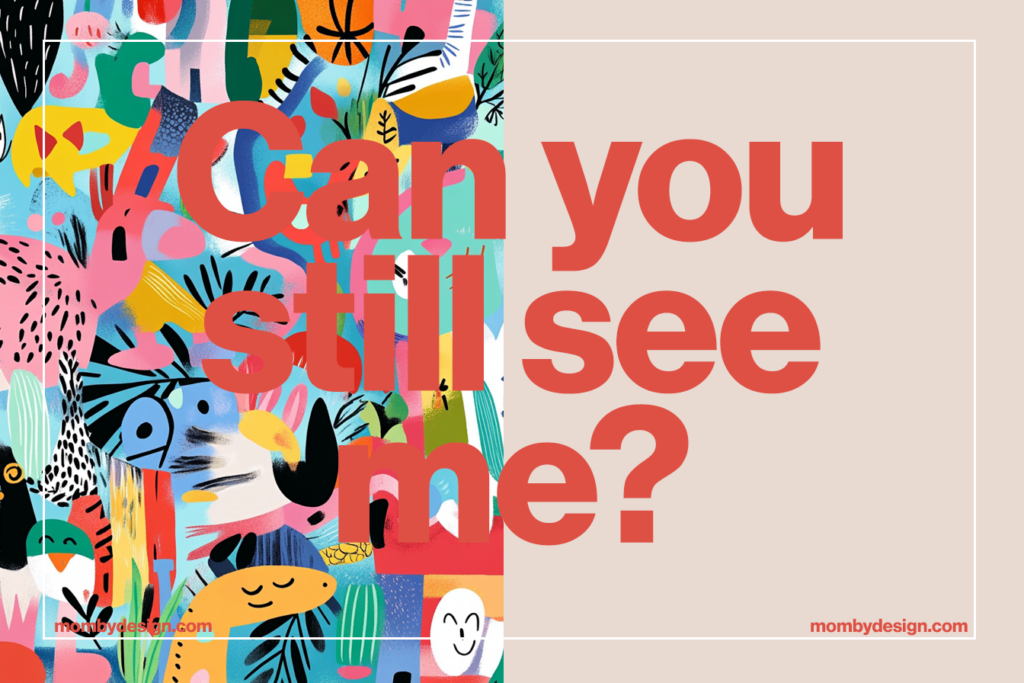
Small spaces need clever solutions
We live in a 2-bedroom apartment in one of the major cities in the NYC area. I don’t need to tell anyone that square footage is scarce. A separate playroom is a luxury. Initially, I decorated one bedroom as my baby’s nursery. We transformed it into my husband’s WFH office a few months later, so I needed a new play space. As a SAHM, our living room always doubled as one. And the dining room. Guest room. And laundry folding room. But that’s a different story.
As my son grew from a baby to a mobile toddler, I wanted him to have a beautiful, safe play area with accessible toys. I also wanted it to work with my living room furniture and décor. Not only to make it look nice but also to create an optical illusion of a larger space and to avoid visual clutter. Physical clutter—well, we can’t really avoid that with a baby, can we?
It’s easy to get tired of colors
I often recommend that my interior design clients keep the base of their interiors simple and timeless. Adding colorful accents like rugs, pillows, and accessories is much easier to switch when we tire of them or when trends change than ripping the whole tiled floor or wallcovering. But that is not an absolute truth. Some people feel strongly about their favorite colors, and that’s ok! I love the color too, and I won’t tell you how to be happy in your own home.
“…but children need color in their life!”

I’ve encountered this photograph of a playroom. A mom posted on Facebook asking for help on how to organize the space. She mentioned her kids never wanted to play there. They did not want to play with their toys, as just getting inside this room was impossible. The mom tried regular cleaning and organizing, but the concept was daunting and overwhelming each time. She was happy and proud of her painting job, though.
The room’s walls are technically covered with bright, happy colors. However, in times when there is so much sad beige criticism, something interesting happened. Most commenters harshly criticized her design choices!
So, which one is it? Happy rainbow or sad beige? The mom provided the kids with a playroom and toys and clearly cared about their well-being, asking strangers online for help. Can we moms just never win?
Is this playroom bright and happy? Unfortunately, it’s not. Artificial, yellow lighting exacerbates the harsh, overwhelming wall colors. There are no windows, no space to rest the eyes or play. There are just way too many toys. It could use better organization, storage, and perhaps toy rotation. The rainbow walls maybe could work if reduced to an accent wall.
Less is more
That brings us to the point I made initially—everything in moderation. The most famous quote in architecture and design is “Less is more” by an architect, Mies van der Rohe. Color is a fantastic tool when used in a balanced, meaningful way. If your house has neutral colors, and your child has beautiful colorful clothes and toys, enjoys going out and spending time in nature, and, most importantly, is loved, I won’t be convinced that this child is deprived of something crucial to its development.
On the other hand, I am not a huge fan of keeping everything in a child’s life in only one shade (less is…boring, perhaps?).
If all the children’s toys, clothes, and the house are intentionally only natural wood, white, or beige, then I indeed feel like it makes it a little…sad. The world and nature are full of beauty and color; why leave a huge portion of it out?
honesty of materials
One of my favorite design principles is called “honesty of materials.” It involves using materials for their function and aesthetics rather than covering them with other materials. In architecture, it means that concrete shouldn’t be painted, for example. But it’s also why natural wood floors will always look and age better than faux-wood ceramic tile. As humans, we instinctually know how wood should look and feel when we touch it or walk on it and even what temperature it should be. We know the sound of an object would make falling on it. The cold, hard wood-look tile gives us a sense of wrongness.
The simple truth is that the origins of a sad-beige aesthetic are based on nature, in the colors of wood, stone, and clay.
However, nature gifted us with many other beautiful colors and the first dyes and paints humans made using naturally occurring pigments.
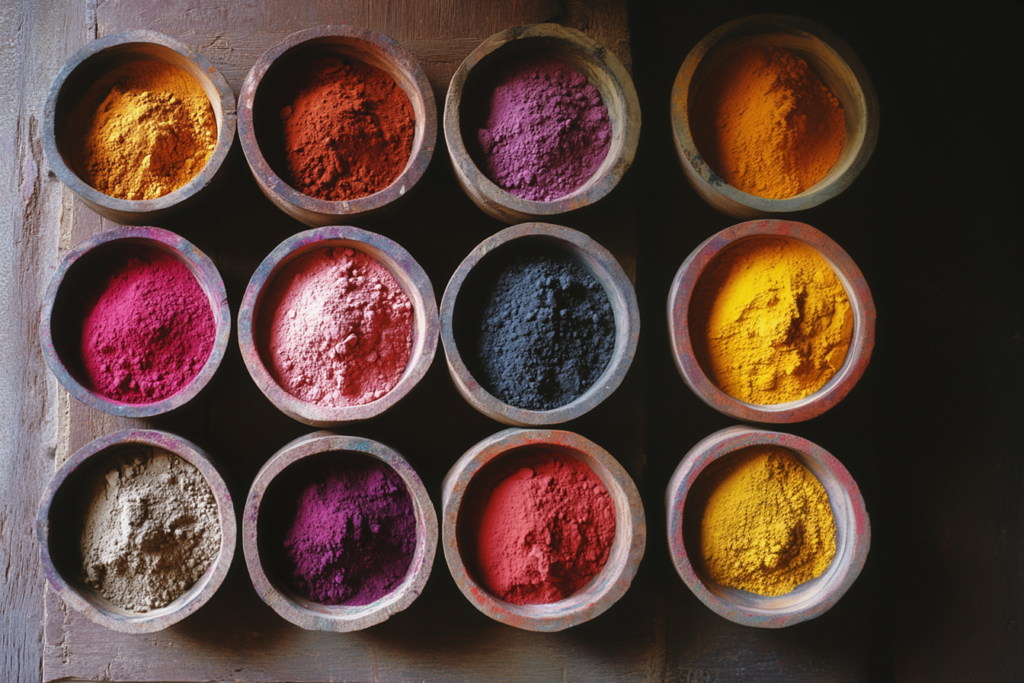
I also think this principle applies to the things that are around my child. I try to buy wooden (but colorful) toys mostly, but I don’t shy away from plastic ones if it’s given by friends and family (I’m grateful they love my child) or if it’s an issue of safety (like a choking hazard).
Conclusion
Interior design is a vast and exciting subject. Not many people nowadays need to be convinced of its importance and how it affects our lives and moods. Amazing things can happen with the right amount of accent colors, textures, and materials!
With our world becoming increasingly polarized on many important topics, I do not like to see the sad beige aesthetic being blown out of proportion and villainized.
There are other issues with social media exposure like children’s safety and mental health of mom and her family. These topic’s should be discussed more rather than the color of a “mom influencer”‘s carpet.
I’d like to end this post with some inspiration because everything is not just black or white, beige, or even a rainbow. There are many shades to everything. And if the children are loved, fed, safe, happy, and healthy, does anything else truly matter?
